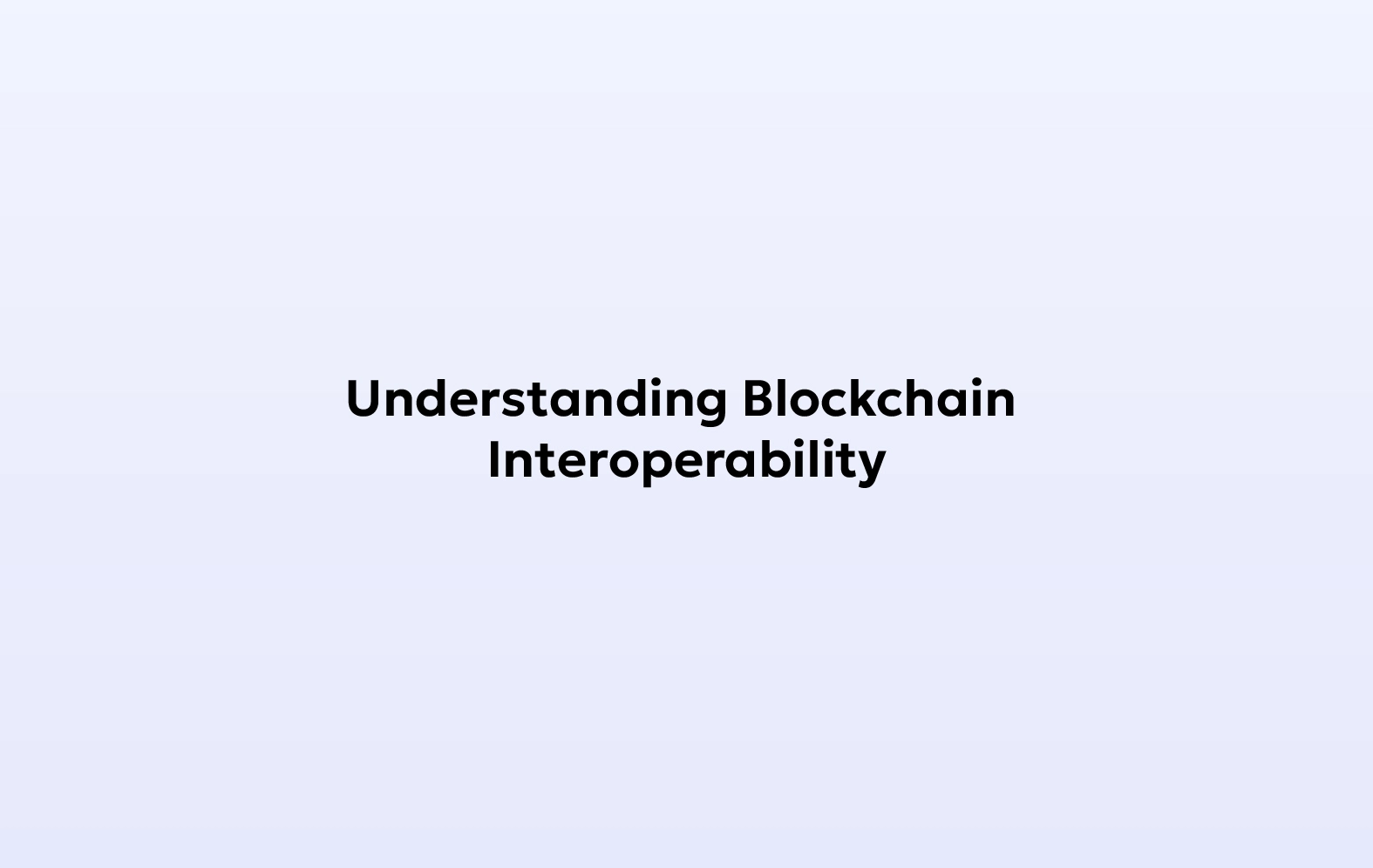Introduction
Cross-chain bridges wield significant influence in the world of cryptocurrency. They facilitate seamless transfers of digital assets across diverse blockchain networks. These tools are designed to enhance the compatibility of different blockchains. It also helps in streamlining asset transfers among various networks.
With the rapid expansion of the DeFi (Decentralized Finance) ecosystem, the significance of cross-chain bridges becomes increasingly apparent. They go beyond mere asset transfers. They serve as vital mediums for interconnecting different blockchains, fostering a unified, more accessible, and efficient crypto landscape.
You can exchange tokens between Ethereum and Solana. Or you might be exploring the vast expanse of the blockchain universe. Cross-chain bridges stand as indispensable tools. This is true, especially in the pursuit of a fully interconnected blockchain ecosystem.
Unlock the potential of digital assets for your institution
Key Takeaways
- Cross-chain bridges enable transactions between different blockchain networks.
- Cross-chain bridges unlock liquidity across chains for the same assets.
- Cross-chain bridges have been subjected to most hacks in DeFi history.
What Are Cross-chain Bridges?
A cross-chain bridge, also known as a blockchain bridge, is a protocol that facilitates the connection between two distinct blockchains. It enables the seamless transfer of digital assets and information between them.
Functioning as an intermediary, this protocol bridges the gap between disparate blockchains. It facilitates various operations, such as token transfers and the execution of smart contracts. It also helps with data exchange and communication between independent chains.
In essence, accessing multiple blockchains through a unified network improves the user experience. It provides liquidity for decentralized applications (DApps) and enhances asset efficiency.
Secure and manage your digital assets with Liminal
How Does a Cross-Chain Bridge Work?
A cross-chain bridge represents a decentralized application designed to facilitate the seamless transfer of assets from one blockchain to another. By enabling cross-chain liquidity, these bridges enhance the utility of tokens across different blockchain networks. A cross-chain bridge typically operates by locking or burning tokens on the source blockchain through a smart contract mechanism and unlocking or minting tokens on the destination blockchain through another smart contract.
These token bridges often rely on specific cross-chain messaging protocols tailored to their purpose, enabling the movement of tokens between blockchains. A cross-chain bridge embodies a specific application of a cross-chain messaging protocol, often serving as a dedicated service linking two blockchains. However, some bridges extend their functionality beyond mere token transfers, facilitating broader applications such as cross-chain decentralized exchanges (DEXs), cross-chain money markets, or providing more generalized cross-chain capabilities.
Consider this scenario: You possess some BTC on the Bitcoin blockchain. You wish to transfer these tokens to the Ethereum blockchain, but the Ethereum blockchain operates with its native ETH token. To achieve this, you would initiate a transaction through a cross-chain bridge. The cross-chain bridge will securely hold your BTC. Then it will generate an equivalent amount in ETH for your use.
In practice, your BTC isn’t physically moved from the Bitcoin to the Ethereum network. Instead, it is locked within a smart contract. This grants you access to an equivalent amount of wrapped Bitcoin (wBTC) usable on the Ethereum blockchain. Should you opt to revert wBTC to BTC. Then, any remaining wrapped tokens are destroyed (burned). Finally, you receive the equivalent BTC amount.
Why Are Cross-Chain Bridges Important?
Blockchains inherently lack the ability to communicate with each other seamlessly. They typically operate within their own isolated networks. They have their own unique protocols, currencies, and programming languages. They also have independent governance structures and cultural nuances. This inherent disparity hinders chain communication and interaction, constraining economic activity within the Web3 ecosystem.
Consider blockchains as separate continents, each with its own unique resources and industries. Continent A is rich in natural resources, Continent B has fertile land for agriculture, and Continent C offers a thriving manufacturing sector and skilled artisans.
To unlock the full potential of these continents, they need to be interconnected. Without bridges, tunnels, or shipping routes linking them, each region would be limited to its own resources and capabilities. Continent A would lack food, Continent B wouldn’t have access to advanced technology for agriculture, and Continent C wouldn’t have the necessary resources for manufacturing.
However, by establishing cross-chain bridges or other forms of infrastructure, these continents can trade with each other. This interconnectedness allows each region to specialize in its unique strengths while benefiting from the world’s wealth and innovation. In this way, cross-chain bridges enable a more prosperous and collaborative global economy.
Similarly, enabling communication allows blockchain to leverage the unique attributes of others. Communication between distinct blockchains, scaling solutions, and specialized application chains is beneficial. This interconnectedness fosters a more dynamic environment. Now, individual chains can focus on their strengths. Plus, they can tap into the blockchain landscape’s collective wealth and innovation. This is possible through seamless trade and interaction.
Types of Cross-Chain Bridges
Wrapping and Minting Bridges
In this variant of cross-chain bridges, tokens native to one blockchain are “wrapped”. In other words, they are translated into a distinct token format on another blockchain. The procedure requires securing the native tokens on the source chain and generating wrapped tokens on the destination chain. Wrapped tokens retain a value pegged to the native tokens, enabling seamless transfer and utilization within the destination blockchain’s ecosystem. Notable examples encompass Wrapped Bitcoin (WBTC) and Wrapped Ethereum (WETH).
Burn and Create Bridges
Burning and creating bridges constitutes another cross-chain bridge model. It is designed to facilitate asset transfers across different blockchains. This process involves extinguishing or locking native tokens on the source chain, effectively removing them from circulation. Concurrently, an equivalent number of tokens is generated or “minted” on the destination chain, symbolizing the transferred assets.
Hash Locks and Time Lock Bridges
This cross-chain bridge variant relies on cryptographic hash locks. They also depend on time locks to execute asset transfers. The protocol initiates by establishing a hash lock on the source chain. It mandates the recipient on the destination chain to meet corresponding conditions for unlocking the assets. Time locks are also integrated to ensure asset claiming occurs only after a specified duration. Such bridges are frequently employed in atomic swaps.
Benefits of Cross-Chain Bridges
Given the influence of the cryptocurrency market, cross-chain bridges offer additional benefits. Let’s explore them:
1. Enhanced Interoperability:
Cross-chain bridges incentivize users with greater interoperability. This enables swift data and token transfers between different networks. This fosters interaction and data utilization among blockchains, enhancing liquidity across various networks.
2. Streamlined Transfers:
Most traditional protocols involve multiple intermediaries. However, cross-chain bridges facilitate direct asset transfers within the blockchain ecosystem. This eliminates the time and cost associated with intermediaries. Thus enabling faster transactions for crypto traders.
3. Improved Asset Security:
Cross-chain bridge development prioritizes asset security during transfers. Employing methods like lock, mint, and burn, these bridges ensure assets traverse a secure pathway. Thus mitigating risks from errors or malicious actors.
4. Cost Efficiency:
With no intermediaries involved, cross-chain bridges eliminate middleman charges. This enables users to conduct cost-effective transfers in less time.
5. User-Friendly Interface:
Blockchain applications offer user-friendly interfaces, simplifying the transfer process. Users can effortlessly experience the features of multiple blockchains. It makes porting funds easy while enhancing usability and accessibility.
Challenges of Cross-Chain Bridging
Establishing secure communication between blockchains without relying on a trusted third party poses considerable challenges. Cross-chain communication inherently involves trade-offs in security, trust, or flexibility that are unnecessary for interactions confined within a single blockchain. This dilemma also implies that achieving composability between smart contracts across different blockchains requires compromising either security, trust assumptions, or configuration flexibility.
Given the limitations of cross-chain messaging, one might wonder why all application activity should not be consolidated onto a single blockchain? The answer to this question unfolds on two fronts.
Firstly, there exist theoretical constraints on the processing capacity of a single blockchain attributable to factors such as computing power, bandwidth, and storage capabilities, especially if decentralization and credible neutrality are paramount.
Secondly, individual blockchains and scaling solutions prioritize different attributes, such as speed, security, and decentralization. This engenders perpetual debate over the optimal balance of these values and thereby sustains demand for diverse chains and solutions.
A pivotal inquiry concerning cross-chain bridges revolves around the choice between wrapped assets and native assets. Wrapped or bridged assets serve as representations of assets from the source blockchain, necessitating varying degrees of security and trust assumptions owing to the involvement of one or multiple entities in the custody of the underlying tokens. These limitations can be alleviated through decentralized verification offered by Proof of Reserve. Alternatively, employing native assets entails effectively using the same asset on the destination chain post-execution of the bridge function, necessitating careful consideration of how token burning on one chain is authenticated to trigger issuance on another.
Furthermore, the concept of finality is paramount in cross-chain bridges—the assurance that funds become available on the destination chain once they have been successfully committed on the source chain. The absence of guaranteed finality exposes the destination chain to risks such as reversed transactions on the source chain (e.g., block reorganizations), potentially resulting in the creation of unbacked bridged tokens.
Cryptoeconomic systems are only as robust as their weakest attack vector. Insecure bridges can jeopardize funds despite the security of the underlying blockchains or layer-2 networks. Key factors in securing a bridge include assessing the cost of an attack and determining the number of participants susceptible to bribery. Maximizing the security of a cross-chain bridge entails diversifying entities and/or reinforcing cryptographic guarantees during state validation and subsequent transaction relay to the destination blockchain.
Given these complex dynamics, attacks on bridges constitute a notable portion of exploits in the Web3 space, underscoring the imperative of prioritizing security when designing cross-chain messaging protocols.
Conclusion
Cross-chain bridges play a pivotal role in shaping a multichain future. They offer the potential to unleash significant value within the blockchain ecosystem. These bridges facilitate seamless interoperability among disparate blockchain networks. They break down silos and grant users access to enhanced liquidity and improved user interfaces. Additionally, they empower users to extract greater value from their assets.
However, despite their utility, cross-chain bridges present certain risks when not properly designed. It is imperative for both users and developers to carefully assess the security measures of any bridge before engaging with it.






